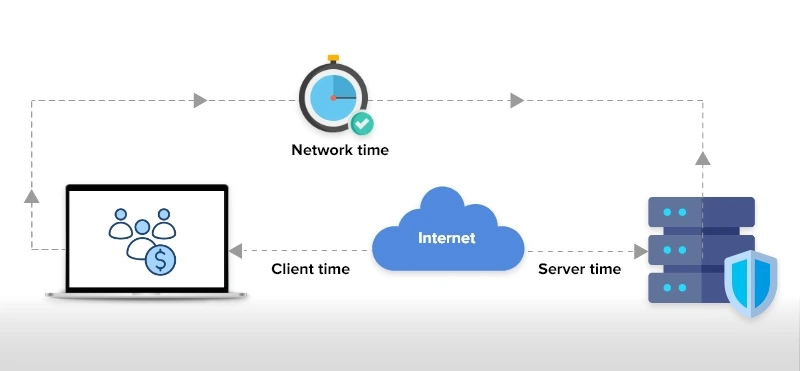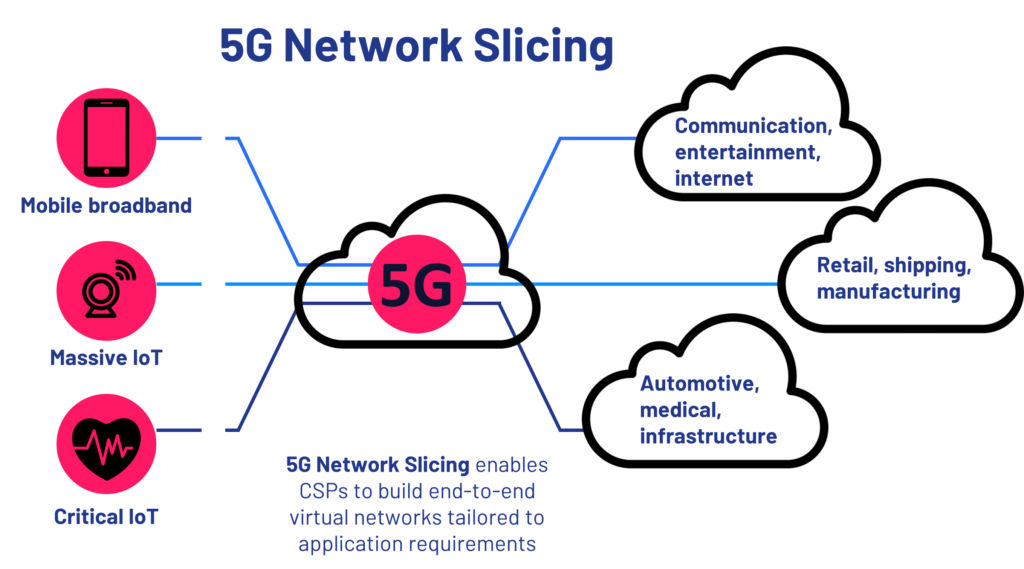- 5G Technology
5G is the fifth generation of mobile networking technology. It provides faster speeds, lower latency, and more capacity than previous generations of mobile networks. 5G networks can support a much larger number of devices and can handle more data traffic, making them suitable for a wide range of applications, including the internet of things (IoT), virtual and augmented reality, and autonomous vehicles. Additionally, 5G networks can also provide more reliable connections, making them suitable for mission-critical applications such as industrial automation and remote surgery. However, 5G technology also raises privacy and security concerns, as well as concerns about the environmental impact of the infrastructure required for 5G networks.
What Is 5G And How Does It Work?
5G stands for "fifth generation" and refers to the latest generation of cellular network technology. It promises faster data speeds, lower latency, and improved capacity compared to previous generations of cellular networks.
5G networks use a combination of high-band and low-band spectrum to provide coverage. High-band spectrum, also known as millimeter wave (mm Wave) spectrum, offers faster speeds but has a limited range. Low-band spectrum, on the other hand, offers longer range but slower speeds. 5G networks use a technique called beamforming to direct radio waves to specific devices, which helps to improve coverage and capacity.
5G networks also use a technology called Massive MIMO (Multiple Input, Multiple Output), which uses a large number of antennas at the base station to improve capacity and coverage. Additionally, 5G networks use a technology called network slicing, which allows multiple virtual networks to be created on a single physical infrastructure. This allows different types of traffic to be handled by different networks, improving overall performance and enabling new use cases.
To use 5G, a device must have a 5G-compatible modem and be in an area with 5G coverage. 5G networks are backward-compatible, which means that devices can still connect to 4G or even 3G networks if 5G coverage is not available.
5G technology is still being rolled out in many countries, and it may take a few more years for it to be widely available. However, it is expected to have a significant impact on industries such as healthcare, manufacturing, transportation, and entertainment.
Advantages of 5G
Faster speeds: 5G networks are designed to provide data speeds that are significantly faster than 4G networks. This will allow for faster download and upload speeds, which will make it possible to stream high-definition video and use virtual and augmented reality applications with less lag.
Lower latency: 5G networks have much lower latency (the delay between sending and receiving data) than 4G networks. This will make it possible to use applications that require real-time interactions, such as remote surgery and self-driving cars.
Increased capacity: 5G networks will be able to handle a much larger number of devices than 4G networks. This will make it possible to connect more devices to the internet, including the internet of things (IoT) devices.
Improved reliability: 5G networks will provide more reliable connections than 4G networks. This will make it possible to use applications that require high availability, such as industrial automation and remote control of equipment.
Network slicing: 5G networks will allow multiple virtual networks to be created on a single physical infrastructure. This will allow different types of traffic to be handled by different networks, improving overall performance and enabling new use cases.
Cost-effective: 5G networks will be more cost-effective than 4G networks. This is due to the improved spectrums, technologies and network slicing.
Advancement in Automation and Industry 4.0: 5G networks will enable new use cases in areas such as industrial automation, manufacturing, transportation, and smart cities, enabling new efficiencies and cost-savings, as well as new revenue streams.
More efficient use of spectrum: 5G networks will make more efficient use of spectrum than 4G networks. 5G will use a wider range of spectrum bands, including higher frequency bands that were previously unused, to increase capacity and reduce congestion.
Faster Speeds
Faster speeds is one of the key advantages of 5G technology. 5G networks are designed to provide data speeds that are significantly faster than 4G networks. This will allow for faster download and upload speeds, which will make it possible to stream high-definition video, download large files, and use virtual and augmented reality applications with less buffering.
5G networks are designed to provide data speeds of up to 10 Gbps, which is 100 times faster than 4G networks. While the average speed of 4G networks is around 50 Mbps, 5G can reach up to 1 Gbps in some cases. With faster data speeds, users will be able to:
Stream high-definition video and use virtual and augmented reality applications with less buffering.
- Download large files such as movies, music, and games in a matter of seconds.
- Use multiple devices at the same time without experiencing slowdowns.
- Use applications that require a lot of data to be transferred in real-time, such as remote surgery and self-driving cars.
Enable new use cases in areas such as industrial automation, manufacturing, transportation, and smart cities, enabling new efficiencies and cost-savings, as well as new revenue streams.
Faster speeds also have an impact on the business side, for example, faster speeds in retail can enable more interactive, personalized and immersive shopping experiences for customers, and faster speeds in healthcare can enable remote monitoring, analysis, and treatment of patients, improving patient outcomes and reducing healthcare costs.
Lower latency
Lower latency is one of the key advantages of 5G technology. Latency refers to the time it takes for a device to send a request and receive a response. Lower latency means that there is less delay between sending and receiving data, which can make a significant difference in certain applications.
5G networks are designed to have latency as low as 1-millisecond, compared to 4G networks which have latency of around 20 milliseconds. This low latency makes 5G ideal for applications that require real-time interactions, such as:
Remote surgery: With low latency, doctors can perform surgeries remotely with the same precision as if they were in the same room as the patient.
Self-driving cars: Low latency is essential for self-driving cars, as it allows them to make quick decisions based on real-time data.
Virtual and augmented reality: Low latency will make it possible to use virtual and augmented reality applications with less lag, providing a more immersive experience.
Gaming: 5G's low latency will allow gamers to experience less lag and more realistic gaming experience.
Industrial Automation: Low latency is essential for industrial automation systems, as it allows them to respond quickly to real-time data and make decisions based on that data.
In summary, lower latency is one of the key advantages of 5G technology, and it enables many new use cases that were previously not possible with 4G or previous generations of cellular networks.
Increased capacity
Increased capacity is one of the key advantages of 5G technology. 5G networks are designed to handle a much larger number of devices than 4G networks, making it possible to connect more devices to the internet, including the internet of things (IoT) devices.
5G networks use a combination of advanced technologies such as Massive MIMO (Multiple Input, Multiple Output), network slicing, and beamforming to increase capacity. Massive MIMO uses a large number of antennas at the base station to improve capacity and coverage, while network slicing allows multiple virtual networks to be created on a single physical infrastructure. Beamforming directs radio waves to specific devices, which helps to improve coverage and capacity.
With increased capacity, 5G networks will be able to support:
- A large number of IoT devices, such as smart home devices, wearables, and industrial sensors.
- High-density areas, such as stadiums, airports, and shopping centers, where many people are using their devices at the same time.
- New use cases such as Augmented Reality and Virtual Reality, that require large amount of data to be transmitted in real-time.
- Smart cities, where a large number of devices and sensors are connected to the internet to improve city services and infrastructure.
Increased capacity also allows for more efficient use of spectrum and network resources, which can lead to cost savings for network operators and service providers.
In summary, increased capacity is one of the key advantages of 5G technology, and it enables many new use cases that were previously not possible with 4G or previous generations of cellular networks. It allows more devices to be connected and allows for more efficient use of network resources.
Improved reliability
Improved reliability refers to the ability of a system or product to perform its intended function consistently and without failure over time. This can be achieved through various means, such as using higher quality materials, implementing stricter testing procedures, and designing the system with built-in redundancy. Improving reliability can increase customer satisfaction and reduce costs associated with repairs and replacement.
Network slicing
Network slicing is a technique used in 5G networks that allows for the creation of multiple virtual networks on top of a shared physical infrastructure.
Each virtual network, or "slice," can have its own dedicated resources and can be customized to meet the specific requirements of a particular use case or type of traffic.
This allows for more efficient use of network resources and improved performance for different types of applications and services.
Network slicing can be used for various applications such as industrial IoT, autonomous vehicles, and enhanced mobile broadband.
Advancement in Automation and Industry 4.0
Industry 4.0, also known as the Fourth Industrial Revolution, refers to the current trend of automation and data exchange in manufacturing and other industries. It is characterized by the use of advanced technologies such as the Internet of Things (IoT), artificial intelligence (AI), and robotics.
These technologies are being used to improve efficiency, increase production, and reduce costs. The goal of Industry 4.0 is to create "smart factories" that can operate autonomously and optimize production processes in real-time.
Advancements in automation and Industry 4.0 are expected to greatly impact the way we work and live, improving productivity and creating new job opportunities.
More efficient use of spectrum
The efficient use of spectrum refers to the ability to use the limited resources of the radio frequency (RF) spectrum more effectively, in order to accommodate an increasing demand for wireless communication services.
There are several techniques used to improve the efficient use of spectrum, including:
- Spectrum sharing: Allowing multiple users to share the same spectrum band, using techniques such as dynamic frequency selection and cognitive radio.
- Spectrum reuse: Reusing the same spectrum band in different geographic areas or at different times, using techniques such as frequency division multiplexing and time division multiplexing.
- Spectrum compression: Using advanced signal processing techniques to compress the data transmitted over the airwaves, allowing more data to be transmitted in the same amount of spectrum.
- Spectrum sensing: Using specialized software and hardware to detect and identify the presence of RF signals in a particular frequency band, in order to avoid interference and optimize spectrum usage.
What 5G Phones Are There To Choose From?
A phone or other component of hardware can't just receive a software update to allow 5G on a 4G phone. 5G necessitates technical hardware. A user needs to have a device that supports 5G, a carrier that supports 5G, and be in an area with a 5G node within range to use 5G. The following are some examples of 5G-enabled phones:
Samsung Galaxy S10 5GSamsung Galaxy Note10+ 5G
Samsung Galaxy A90 5G
One Plus 7 Pro 5G
Moto Z3
Xiaomi Mi MIX 3 5G
Huawei Mate X
Huawei Mate 30 Pro 5G








Good informetion
ReplyDelete